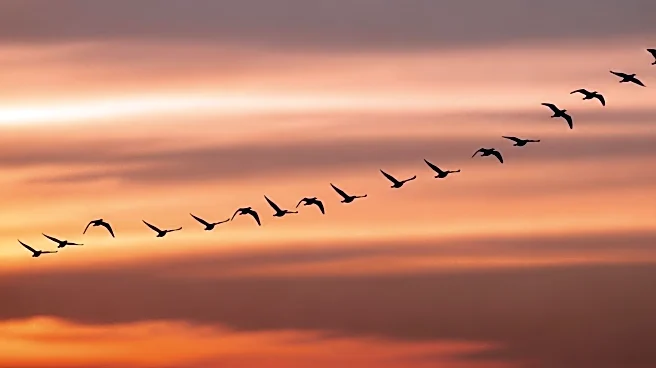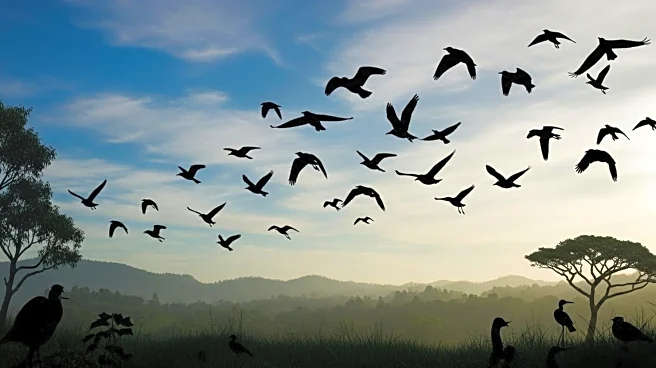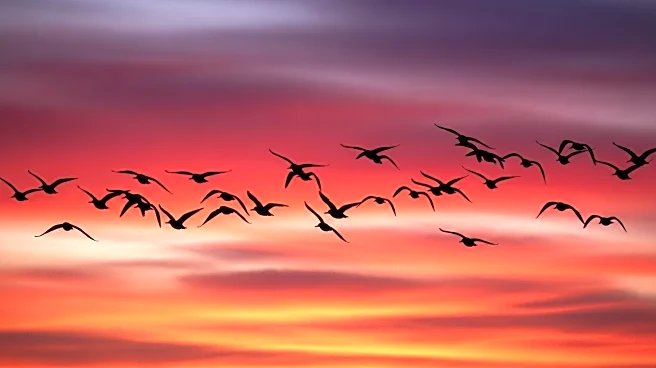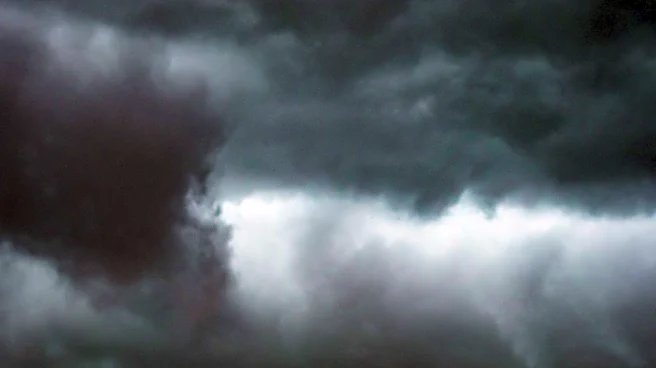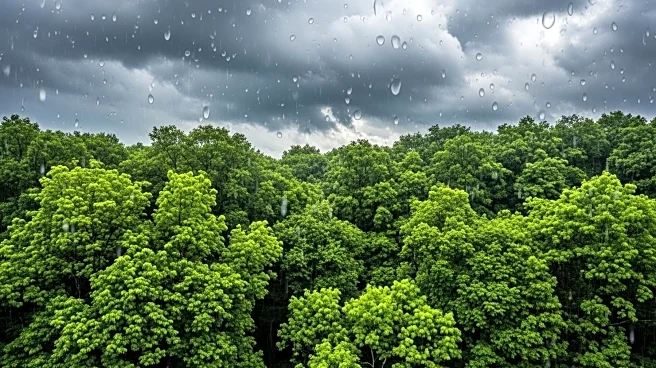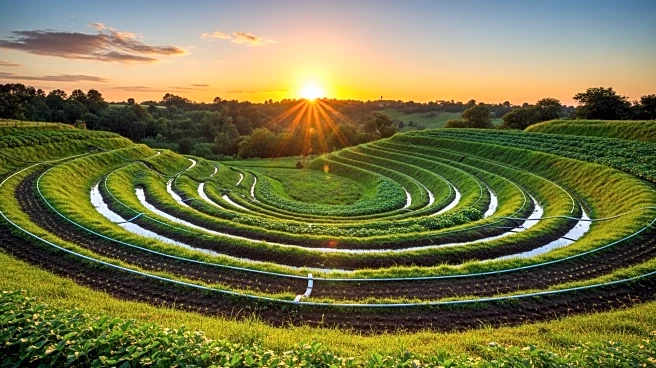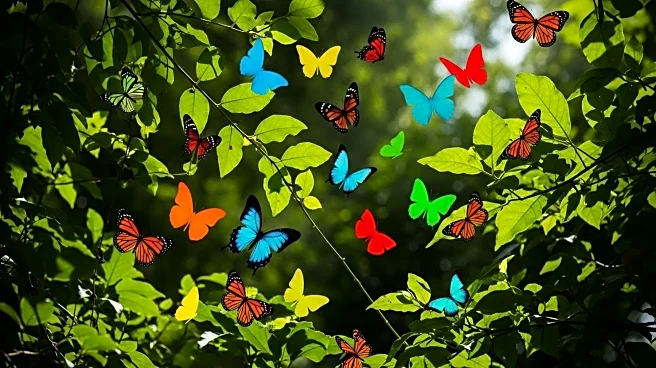What's Happening?
Scientists warn that climate change is disrupting bird migration patterns, which could have dire implications for both birds and humans. Birds are moving to new areas as their traditional habitats become unsuitable due to changing climate conditions. This disruption affects avian ecosystems globally, with species like the Red Knot, Swainson’s Thrush, and Black-throated Blue Warblers experiencing population declines due to dwindling food supplies. The National Audubon Society predicts that 389 North American bird species could become extinct within the next half-century.
Why It's Important?
The disruption of bird migration patterns has significant implications for global ecosystems, as birds play a crucial role in pollinating plants and controlling insect populations. A decline in bird populations could lead to reduced food production and impact the economy, particularly in the production of cash crops like coffee and chocolate. The situation underscores the interconnectedness of climate change and biodiversity, highlighting the need for conservation efforts to protect avian species.
What's Next?
Ornithologists suggest measures to help birds during migration, such as reducing light pollution and providing food and water sources. Conservation efforts may need to focus on protecting critical habitats and addressing climate change impacts to ensure the survival of bird species. The international community may need to increase support for conservation initiatives and research to understand and mitigate the effects of climate change on bird populations.
Beyond the Headlines
The changing bird migration patterns could lead to long-term shifts in ecosystems and biodiversity, emphasizing the importance of sustainable environmental practices. Ethical considerations arise regarding the responsibility to protect vulnerable species and habitats affected by climate change.

